On the previous day, we went to Tokyo DisneySea and spent the whole day there. Today I thought we will be taking a bit of a break, walking around Ueno park, visiting Ameyoko shopping street there, as well as going to the otaku central, Akihabara.
The nearest station from Ueno Park, is without a doubt, Ueno station. It is served by almost all of the train lines, with the most popular lines being the JR Yamanote line, JR Keihin-Tohoku line, Tokyo Metro Ginza line, as well as Tokyo Metro Hibiya line. There are also several shinkansen lines that runs through Ueno station.
Ueno Park (Ueno-koen) is one of the most famous park located in Ueno, in Tokyo’s northern district. If you come early in the morning (and I mean, really early around 6.30am), you’ll be able to see a group of people doing radio calisthenics, which is a popular warm-up start-of-the-day mini-exercise that’s participated by almost everyone in Japan.
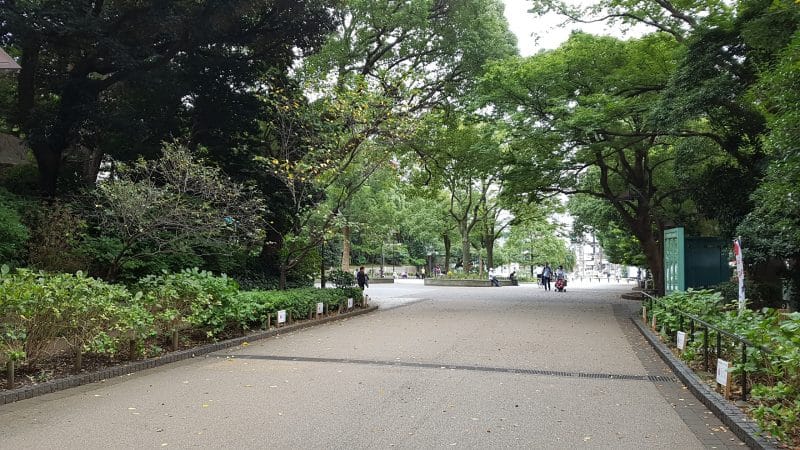
Walkway from the Ueno Park entrance
The park itself is quite large, and if you go during the hanami season, you’ll definitely see a lot of sakura trees there, as well as a huge number of people. There are several shrines that you can visit, as well as several museums accessible from the park itself. There is also a huge pond, Shinobazu, on the southern side of the park.
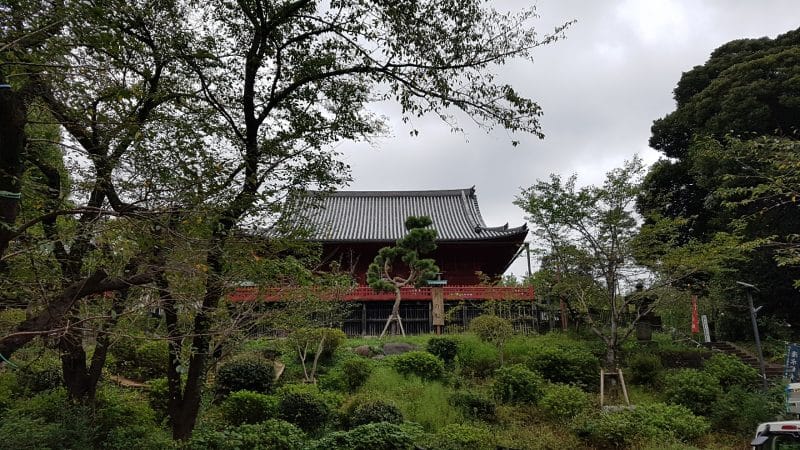
One of the temples in the park, Kiyomizu Kannon-do, attributed to the goddess Kannon/Guan Yin
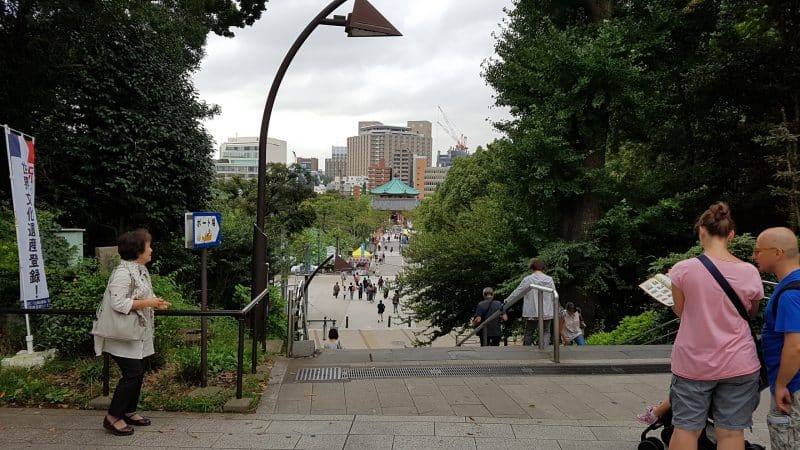
Walkway leading to another temple, in which we were too lazy to go to
Ueno Park is also home for a lot of homeless people in Tokyo. They normally construct a makeshift tent using a blue tarp. In general, homeless people in Japan are not as aggressive as in other countries. They normally keep it to themselves, however if you do see one I would advise to avoid contact.
We briefly stopped at Starbucks for a frappe (my son loves the matcha frappe), and continued to walk around for a bit, before going back to Ueno station for our lunch: the famous Ichiran ramen, located just near the Ueno station.
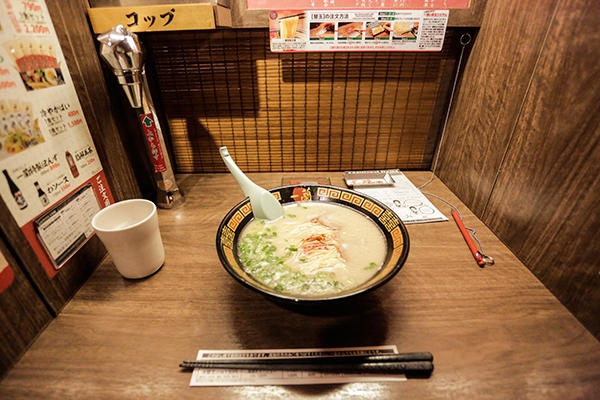
The famous Ichiran ramen [source]
The claustrophobic and small space in any of the Ichiran ramen establishments made them unsuitable for families, especially if you’re bringing your own stroller. If you want to try it, I would recommend either leaving the stroller behind in your accommodation, or ask the staff to mind the stroller for you in the entrance.
There’s also normally a queue for the ramen shop. Fortunately though, they have English menu.
I personally prefer Ippudo rather than Ichiran as I found Ichiran a bit too bland despite using pork-based (tonkotsu) broth.
After our lunch, we continued our walk to Ameya-yokocho, or more famously known as Ameyoko. Ameyoko is an open market street that runs along the JR Yamanote line between Okachimachi and Ueno stations. The name itself translates to candy store alley (ame – candy, ya – store, yokocho – alley/street). There are a lot of things you can buy here, from handbags, clothing, footwear, fresh ingredients, even food!
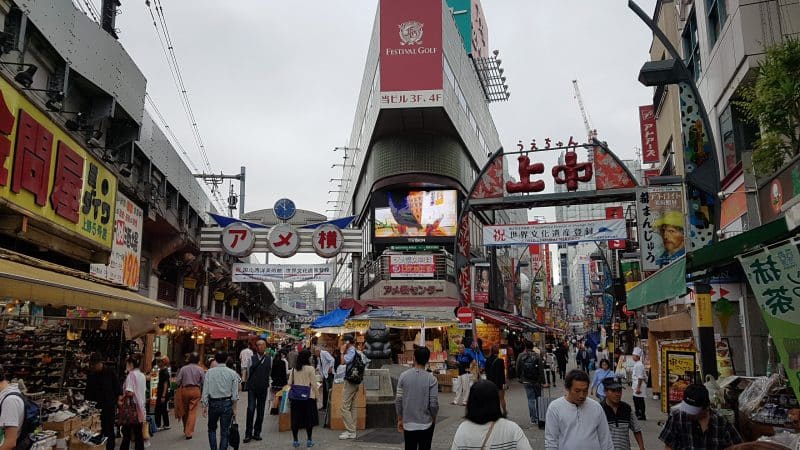
Ameyoko on the left side
Ameyoko is also famous for it’s black market goods. If you want to be on the safe side, it’s probably best to keep your shopping to food stalls. Otherwise, it’s a good way to get good items at a relatively good price.
After going back and forth in Ameyoko, we decided to go for one more stop at the otaku central, Akihabara. Also called Akiba, after a local shrine, Akihabara is a district in central Tokyo famous for its electronic shops, as well as it’s prominence in the otaku culture, with many shops for anime, manga (although Nakano Broadway is more specialised), and also games paraphernalia.
The nearest station to the Akihabara district is Akihabara station. The station is served by the JR Yamanote line, JR Keihin-Tohoku line, JR Sobu line, and Tokyo Metro Hibiya line.

Akihabara seen at night [source]
The discount store chain Don Quijote in Akihabara is also home to the pop idol group AKB48. They have daily shows on the 8th floor of the store, at around ¥3,000 per person. There is also AKB48 cafe and shop next to Gundam Cafe that serves food inspired by the AKB48 idols and also sells character goods. Obviously, AKB48 performs daily in the cafe during scheduled times.
There is also Square Enix cafe that sells merchandise related to anything Square Enix, as well as selling Final Fantasy-themed food items such as potions and whatnot. When we were there, it was before the release of Final Fantasy XV worldwide, and as such, there were a LOT of FFXV merchandise. And these merchandise aren’t cheap either!
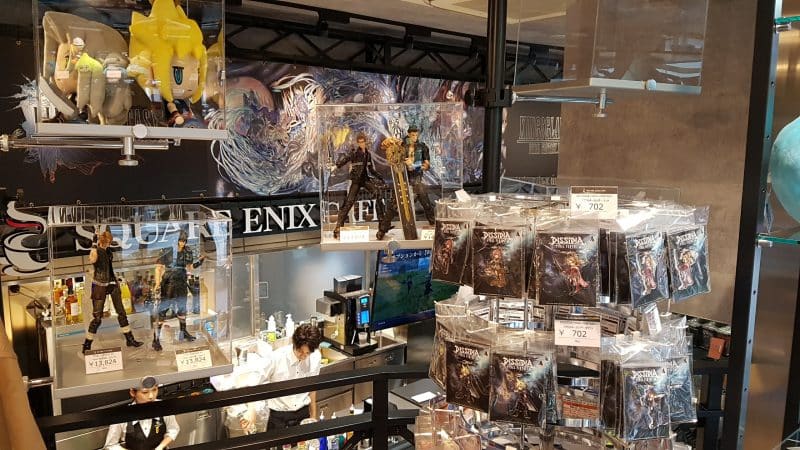
(from left) Prompto, Noctis, Ignis, and Gladiolus figure, each setting you back around ¥14,000 or around AU$180
They also have merchandise for Square Enix’s other franchise, Dragon Quest. Now if you grew up in western countries, or you didn’t grew up during the JRPG golden years, you wouldn’t necessarily know the Dragon Quest franchise. It’s a turn-based classic true-to-form JRPG that dates back from 1986. It was and still considered as one of the pioneer in JRPG genre as it introduced a lot of staple that later on became a standard in JRPG games. It has achieved a cultural recognition in Japan as there are museums and exhibitions dedicated to this franchise (which I will cover in our last day of the trip).
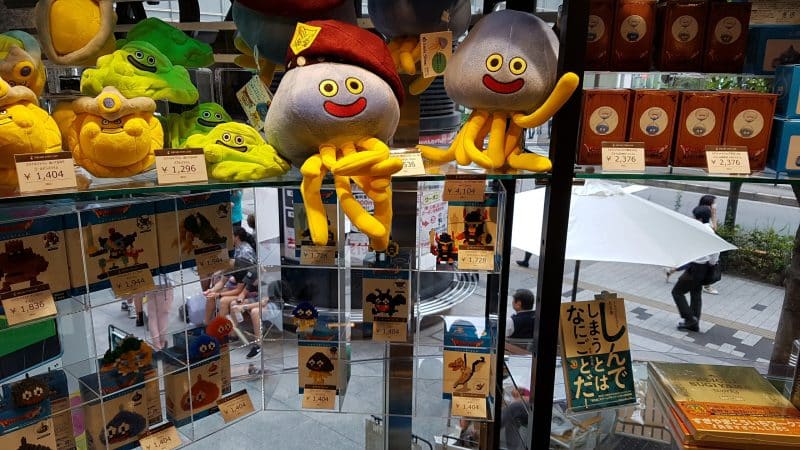
Dragon Quest merchandise, which are much cheaper and palatable compared to Final Fantasy ones
After buying some merchandise from the store (I bought a Metal Slime paperweight), and stopping for a good takoyaki, we went back home to prepare for the next day, where we will be going to Tsukiji market, and the upmarket shopping district, Ginza.
